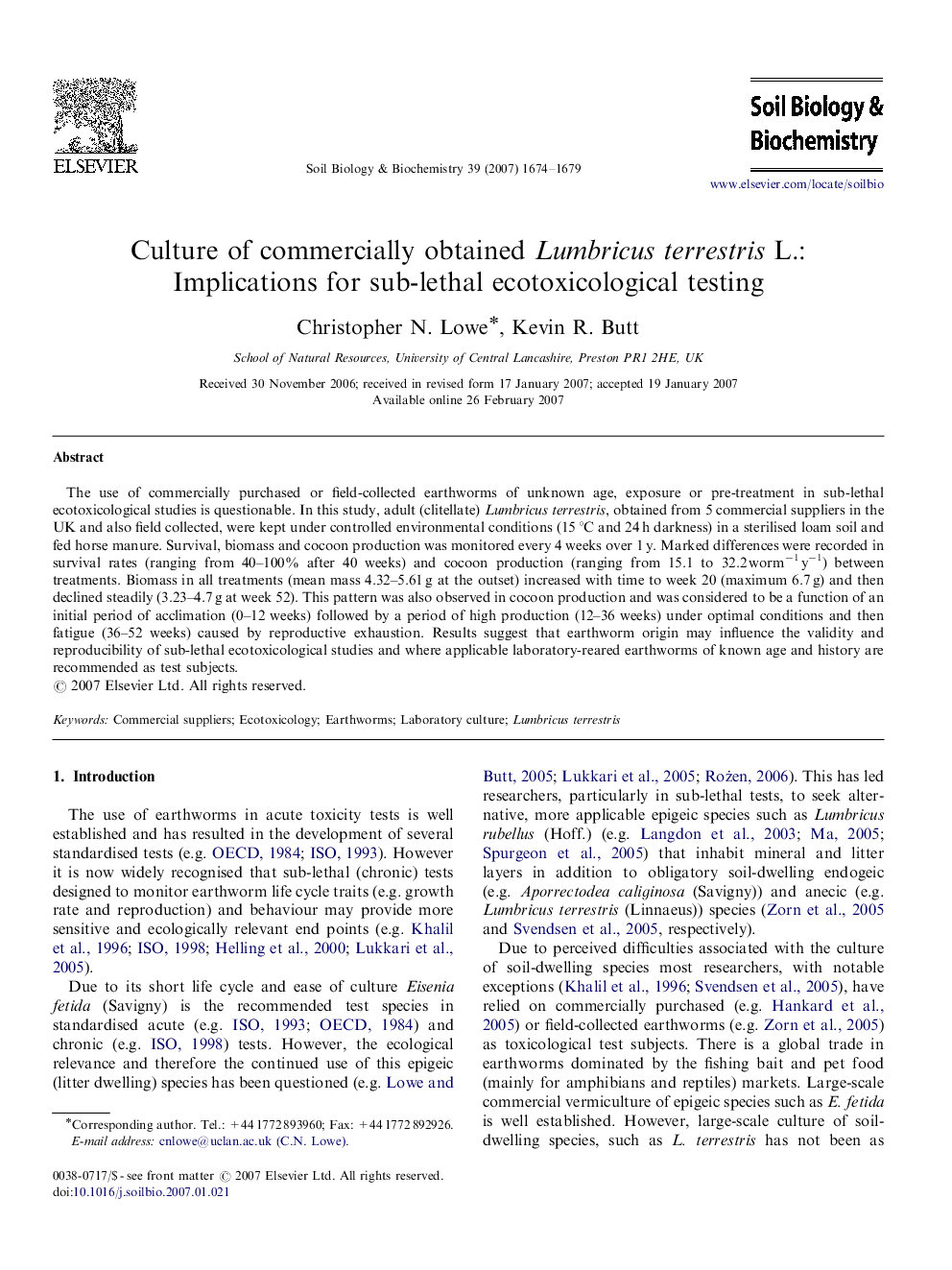| Article ID | Journal | Published Year | Pages | File Type |
|---|---|---|---|---|
| 2026231 | Soil Biology and Biochemistry | 2007 | 6 Pages |
The use of commercially purchased or field-collected earthworms of unknown age, exposure or pre-treatment in sub-lethal ecotoxicological studies is questionable. In this study, adult (clitellate) Lumbricus terrestris, obtained from 5 commercial suppliers in the UK and also field collected, were kept under controlled environmental conditions (15 °C and 24 h darkness) in a sterilised loam soil and fed horse manure. Survival, biomass and cocoon production was monitored every 4 weeks over 1 y. Marked differences were recorded in survival rates (ranging from 40–100% after 40 weeks) and cocoon production (ranging from 15.1 to 32.2 worm−1 y−1) between treatments. Biomass in all treatments (mean mass 4.32–5.61 g at the outset) increased with time to week 20 (maximum 6.7 g) and then declined steadily (3.23–4.7 g at week 52). This pattern was also observed in cocoon production and was considered to be a function of an initial period of acclimation (0–12 weeks) followed by a period of high production (12–36 weeks) under optimal conditions and then fatigue (36–52 weeks) caused by reproductive exhaustion. Results suggest that earthworm origin may influence the validity and reproducibility of sub-lethal ecotoxicological studies and where applicable laboratory-reared earthworms of known age and history are recommended as test subjects.
